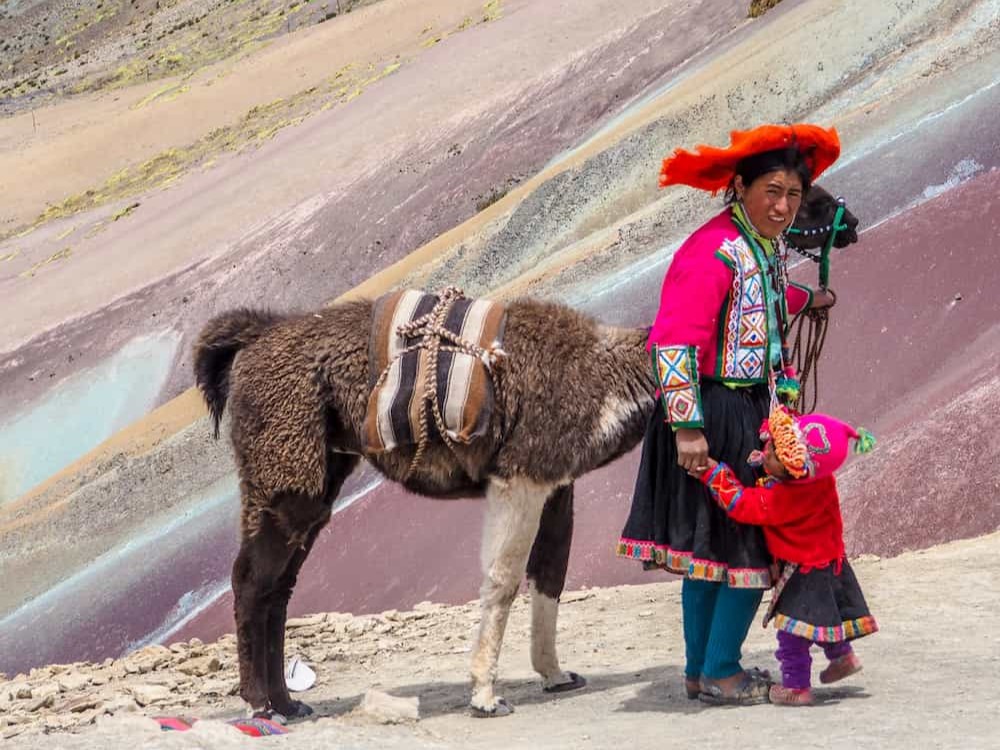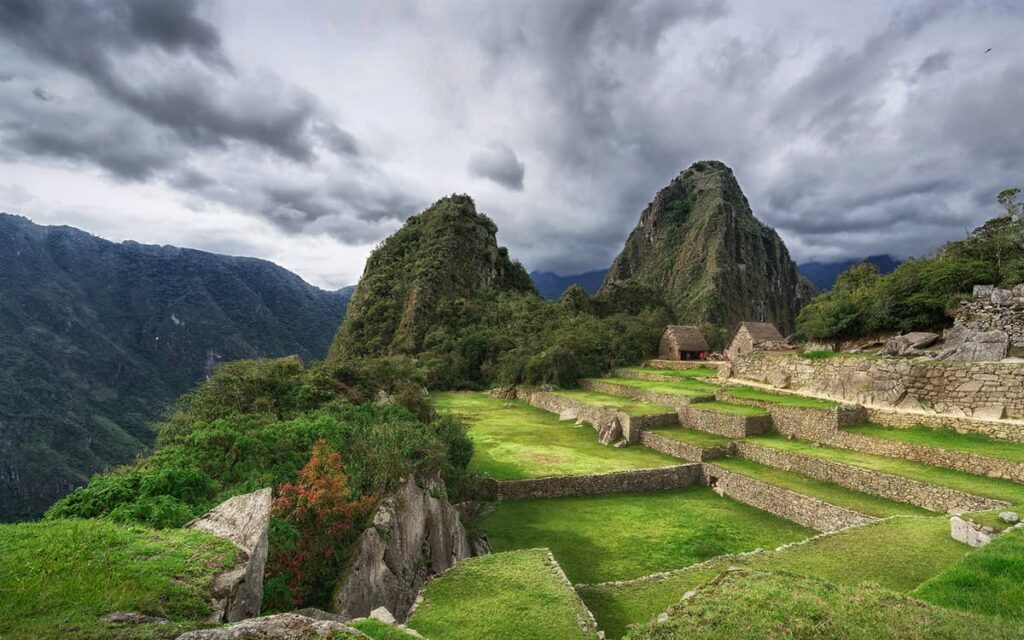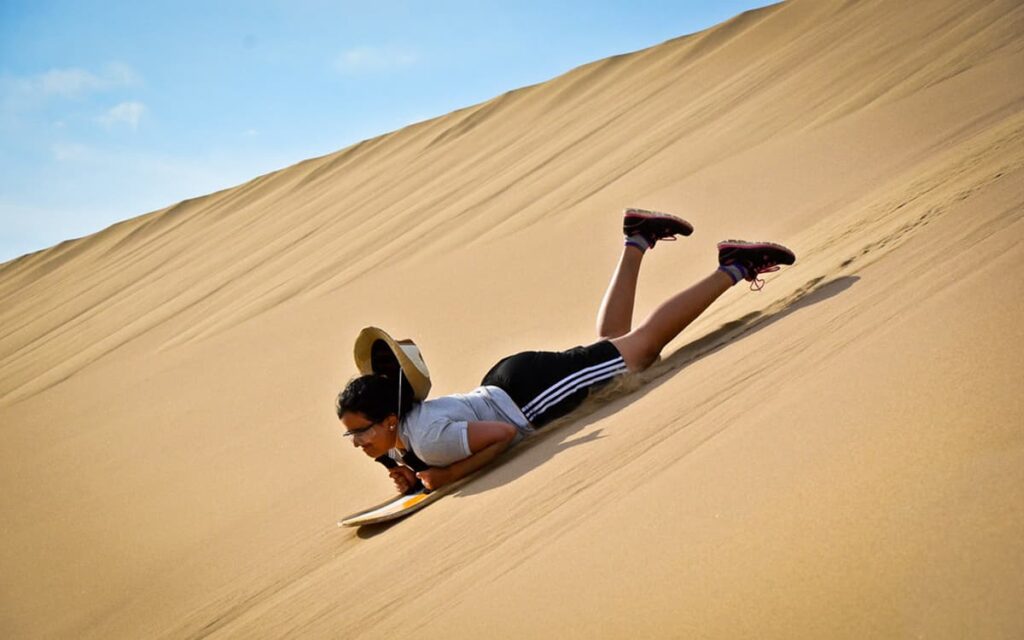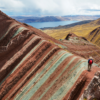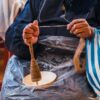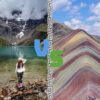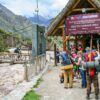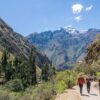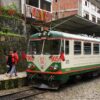The Basilica and Convent of San Francisco in Lima is an important religious complex that is located in the city of Lima. Due to the antiquity and importance of this temple and convent, it is also considered an important museum today.
Regarding the Basilica and Convent of San Francisco in Lima was the first building of the complex. It is known that the lands where this temple stands were granted for religious purposes at the beginning of the Colony, but the church began to be built in 1542, although initially it was a small and quite modest structure. It was between the years of 1556 and 1560, during the government of Viceroy Hurtado, that the structure of the temple began to be expanded and improved.
Despite its prompt remodeling, the instability of the terrain and the earthquakes that occurred in the 16th century, caused the temple to fall and had to be rebuilt in the 17th century together with the convent.
The new work from the 17th century, unlike the previous structure, had and is little simple, since the marked Baroque style of its cover already augurs the internal wonder of the design. Spatially, the temple has a plan in the shape of a Latin cross and has three naves.
Outwardly, the church stands out for the magnificent façade it displays; that baroque, wherever you look, is made of stone and is flanked by two magnificent towers. In the niches of his body, on the entrance gate, the sculptures of three important figures for Catholicism are registered: The Virgin of the Immaculate Conception, the effigy of San Francisco, and that of Santo Domingo.
As part of the baroque design of the structure, the empty space in the internal decoration of the temple does not exist, so it is not surprising the presence of more than twenty altars inside, as well as canvases that were magnificent pieces of religious art that were made by members of the Cusco school.
But the splendor of the religious monumental complex of San Francisco, is not reduced to the Church, but extends to the convent that it owns and with which it connects. The convent, of the same architectural trend as the temple, stands out individually for the library it has.
The library of the convent of San Francisco is one of the richest in the Peruvian territory, it contains at least 25 thousand texts, including manuscripts and books. The San Francisco collection is valuable in addition to the number, the incunabula it presents and because the texts that make it up are not exclusive to the Spanish language; likewise, the oldest texts in the complex date from the 15th century, so in summary, it is a library that any researcher would like to know.
To the previous structures of the Basilica and Convent of San Francisco in Lima, there are underground enclosures, manifested in the form of catacombs, which to date are one of the main tourist attractions of the Historic Center of Lima.
Visits to the church are allowed during mass hours, or perhaps following the tours that the museum promotes and that allows access to both the convent, the church, the library and even the catacombs of San Francisco.
History
The Basilica and Convent of San Francisco in Lima is part of the San Francisco de Jesús el Grande Monumental Complex, which was founded by Fray Francisco de la Cruz in 1546. Today it is located in the first block of Abancay Avenue among the shreds Ancash with Lampa. It has an approximate extension of 600 meters long by 300 meters wide and in its heyday it became one of the largest in America. The convent as part of the Monumental Complex and as the home of our Franciscan brothers underwent several modifications due to multiple earthquakes, being that of October 28, 1746, as the most destructive earthquake that Lima endured, leaving the city in rubble and much of our convent destroyed.
It was Fray Luis de Cervela, a native of Spain, who arrived in Lima in June 1669 and as General Commissioner of the Order of San Francisco worked for six years, achieving much of the reconstruction of the convent; In addition to decorating the convent with tiles that still shine today, he commissioned the series of canvases depicting the life of Saint Francis from the most important painters of the time in Lima. Other minor works are also remembered such as the paving of the square, the casting of the basins of the Main Cloister. Finally, after six years of intense management work, Cervela leaves Peru to return to Santiago de Compostela, leaving an indelible step.
In 1936, during the government of Marshal Oscar R. Benavides, the First Pan-American Tourism Congress was held in Lima. In this event, a Viceregal Religious Art Museum was exhibited in the interiors of the San Francisco Convent, with collections of objects and cult items from different convents, monasteries and the very ones it housed.
Description of the Basilica and Convent of San Francisco in Lima
The Basilica and Convent of San Francisco in Lima is in the Baroque style of Lima, it has grace and monumentality. A rhythmic padding runs through its walls, which are adorned by a wooden balustrade at the top. Inside, they deserve to be seen: the main altar that is neoclassical in style, the catacombs and the museum, the porter, the chapter house and the cloister.
Sacristy
The Sacristy of the main temple is one of the current jewels of the Franciscan complex. The work on the sacristy was completed in 1730, highlighting its cover, executed in 1729 by Ensign Lucas de Meléndez. Its vault collapsed in the wake of the 1966 earthquake, leaving it out in the open ever since. It was restored in the 1990s with the help of the government of Spain. It has inside a beautiful drawer, destined to keep the liturgical clothing and ornaments, and houses an important series of paintings of the Apostolate attributed to the Francisco de Zurbarán Workshop.
Gatehouse
Going through the door of the convent, a spacious environment is located, with baseboards adorned by tiles, which has as its main attraction a triptych of the Crucified Lord, whose side paintings are works by Angelino Medoro. We also find paintings from the Lima school, of great value.
Porter’s Lodge
Here, we are going to find a wooden sculpture of Jesus Crucified; paintings of saints from the Catholic Church, from the Lima school of the seventeenth century; as well as paintings from the Cusco school, and two paintings in the form of a medallion, representing passages from the life of Francisco Solano, made to celebrate his canonization.
Lobby
It is a large room with a carved wooden ceiling, with Sevillian tile plinths. Here you will find four paintings by famous artists, depicting Catholic saints; in the central part, the main attraction is a rococo style temple from the 18th century, worked in wood and decorated in gold leaf. The temple was used formerly for the Corpus Christi festival, in it, a custody of the Cusco school was placed; now is the image of Christ the Savior, in baroque style, from the 18th century, which belongs to the sacristy of the temple.
Main cloister
It is a beautiful quadrilateral patio, surrounded by galleries in the form of semicircular arches, eleven per side, all of them supported by pilasters. The walls are decorated with Sevillian tiles in the base, dating from 1620, the theme of the decorations being the Franciscan saints.
This main cloister has a collection of 39 canvases made in 1671: They represent scenes from the life of Saint Francis of Assisi, the same ones that were painted by Lima artists. When the canvases were taken down in 1974 in order to restore them, mural paintings with mixed technique, tempera and oil, corresponding to the Italian Mannerist school, were discovered by chance, dating from the first third of the 17th century. They were made on the wall of the walls; they are currently under investigation by professional restorers. In the corners of the Cloister you can see four carved wooden altarpieces, representing four moments in the life of Saint Francis of Assisi, altarpieces that were made between 1638 and 1640. The ceilings are beautiful, entirely in cedar wood, brought from Costa Rich, in Mudejar style.
Chapter house
An environment where the Franciscans met to celebrate their conventual chapters and choose a new superior or discuss matters of major importance. There are two rows of seats with raised backs that surround the room and have at the center as a union of the two rows, the chair, main or tribune, which is crowned by the shield of the Order; In the center there is a high relief wood carving with the image of Fray Juan Duns Scoto, as well as the image of the Immaculate Conception Patron Saint of the Franciscans, before whom they prayed before holding their meetings, in which they happened many times various problems between them, so the presence of the viceroy’s guard was necessary.
The chapter house of this convent is a historical room, because in it the regular clergy signed the Act of Independence, while in the cathedral it was signed by members of the secular clergy. Another of the artistic values ??that we must highlight in this room is the presence of a canvas that represents Our Lady of Antigua, a virgin with a dark complexion.
Andas Hall
Environment where different litters are preserved that serve for the processions of the saints of the Catholic Church, where we can differentiate the following: one of embossed silver, which is used on the first Sunday of November of every year for the procession of the image of San Judas Tadeo; another, carved in wood, and covered in fine-cut gold leaf, made in 1732 on the occasion of the celebrations for the canonization of San Francisco Solano; and, a third, destined to San Francisco de Asís, also worked in wood and covered in gold leaf, was made in 1672. It has been used for many years in the traditional «Paso Procession», between the temples of San Francisco and Santo Domingo; It is currently used on May 1st for the departure of Our Lady of Chapi.
Museum or Profundis Room
Environment for the exhibition of a collection of eleven canvases of approximately three meters; each one represents the «Passion of Christ» and belongs to the workshop of the great flamenco master Pedro Pablo Rubens, all of them with great execution, harmony of color and great expression in their characters. They say that like any teacher, Rubens only dedicated himself to making the sketch and his students continued to work on it, often limiting themselves to putting the finishing touches. Also, it is striking how a Moorish-style lattice balcony is preserved in this place, called the Pizarro balcony, because it was in the Government Palace. There are other important attractions such as that, at the back of the room, you can still see an ivory crucifix, which was brought from the city of Manila, Philippines; existing in the center of the room a crypt where the protectors of the Order were buried.
Refectory
Environment that was formerly used for the dining room. In this place are the famous collection of fifteen canvases that represent the Twelve Apostles, Christ the Redeemer, the Virgin Mary and Saint Paul, imposing paintings that belong to the art of the Spanish master Francisco de Zurbarán, who was born in Fuentes de Cantos, In Badajoz, Spain, dying in Madrid Zurbarán was a painter who made his works in the Baroque style, mostly on religious themes, in which the composition and color are totally fantastic, giving the impression of observing a natural image. The works of this artist are in the best museums in the world. Accompanying this collection by Zurbarán is the outstanding collection of ten canvases representing the Apostles, which are part of the environment for the exhibition of a collection of eleven canvases of approximately three meters; each one represents the «Passion of Christ» and belongs to the workshop of the great flamenco master Pedro Pablo Rubens, all of them with great execution, harmony of color and great expression in their characters. They say that like any teacher, Rubens only dedicated himself to making the sketch and his students continued to work on it, often limiting themselves to putting the finishing touches. Also, it is striking how a Moorish-style lattice balcony is preserved in this place, called the Pizarro balcony, because it was in the Government Palace. There are other important attractions such as that, at the back of the room, you can see an ivory crucifix, which was brought from the city of Manila, Philippines; In the center of the room there is a crypt where the protectors of the Order were buried from the 19th century of the Apostolate of Rubens which is in the Prado Museum. At the back of this room there is a huge canvas of the Last Supper, which is attributed to the Jesuit brother Diego de la Puente, who painted in all Jesuit houses.
Beforechristy
Here, we appreciate an immense canvas measuring five by six meters, which represents the genealogical tree of the Franciscan Order, a work dating from 1734; It is a Lima painting of a well-known author.
Upper cloister
Upon reaching it, we are at the top of the convent, from where we can see, first of all, the beautiful garden of the five bronze fountains. In the corners there are four of the 27 alabaster crosses that were initially located on the perimeter of the atrium or square of the monumental complex, and in this part of the Convent are the rooms of the Franciscans. Its primitive columns were made of black stone, brought from Panama. Later, they were withdrawn, due to deterioration, due to strong seismic movements, and restored by the current ones of greater consistency. Here we also find paintings on the walls, with images of Catholic saints.
Chorus
In earlier times, in this place the Franciscans met for their religious services or ceremonies. It is a rectangular piece, which measures 22 m long by 12 m wide, where an impressive baroque choir stalls, carved in cedar, are preserved, which extends on both sides. It also has 130 seats, having in the central part, as the union of the two rows, the main seat of the Guardian of the Order, the same one that has on its back a beautiful carving of the embrace of San Francisco and Santo Domingo.
The stalls are beautifully carved and engraved. In the second row the figures of 71 images of the Christian religion can be seen in high relief, which are separated by small corbels in the shape of caryatids. In the center is the lectern, a revolving cabinet where the singing books were placed. All the wood that was used for the work of this ashlar is entirely made of cedar, brought from Costa Rica during the 17th century and made in total Baroque style.
Library
In this place of great value, there are approximately 25 thousand volumes, there are very rare editions, incunabula and Franciscan chronicles from the 15th to the 18th century, as well as some volumes published in the early days of printing in Peru, as well as more than 6 thousand scrolls, numerous works by Jesuits, Augustinians, Benedict, etc. There are also books on Theology, Philosophy, History, Literature, Music, Canon Law, Ecclesiastical Law, Bibles written in Latin, Spanish, French, Portuguese, Italian and some written in very rare languages.
Conventual archive
The archive of San Francisco is the place where the historical documents of the Franciscan province of the 12 Apostles of Peru are kept. Here are the handwritten evidence of the negotiations made with Spain and Rome by the Franciscan Order since its arrival in America, especially Peru. We can also find graphic material such as maps, photographic plans, musical material and a small auxiliary library. They are currently organizing it in a systematic way to be more useful to its users, starting these works in 1983, and counting since 1987 with Unesco help.
Dome
When you go up to the second floor by the pastry brick staircase that is on the left hand side and we stop for a moment in the middle of the road, when we raise our heads we have above us the beautiful Mudejar design dome, which, for its finish and dimensions are unmatched in the entire American continent. It was made in 1625 with wood brought from Costa Rica, by Fray Miguel de Huerta. As a result of the 1940 earthquake, the central part of the better half collapsed, being restored in 1969 by the architect Alberto Barreto Arce. Juan de Dios Muñoz, from Cuzco, collaborated with these works, rebuilding the damaged wood, in whose decoration geometric figures predominate. The only original thing about this dome are the corners or pendentives, which support this half of the sphere; In addition, on the wall there are two canvases with scenes from the life of San Diego de Alcalá, patron of the nurses of the Franciscan order.
Cloister of the Holy Land
It is so called because the shield of the Holy Land can be seen there until now. It was the preferred lodging of Father General Commissioner that is inside.
Catacombs in San Francisco
The most impressive thing about this building are the Catacombs in San Francisco, which impress more than one since they were the old cemetery in colonial times. It was operating as such until 1810 and it is estimated that at that time it must have housed up to 25,000 people. Today a good number of bones classified by type can be observed in the different rooms and sometimes arranged in a quite «artistic» way, like those of the common grave. Some doors of this Catacombs in San Francisco – which according to some hypotheses lead to corridors that connect with other churches and even with the Government Palace – make this place a shocking space.

